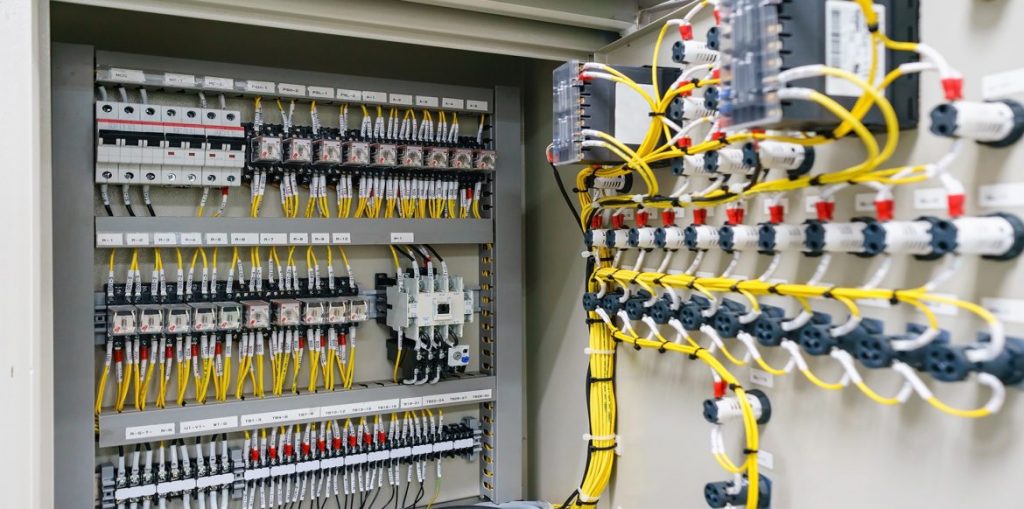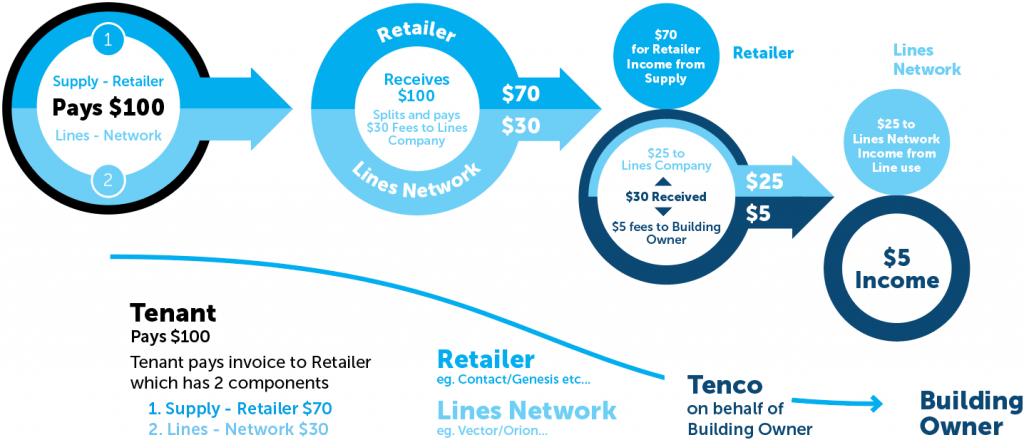An electrical embedded network provides a way for commercial building owners and body corporates to capture revenue from the electricity lines infrastructure within their properties

Within the New Zealand electricity market, the distribution of electricity falls nationally to Transpower then regionally to the local line companies (Vector, Orion etc). These charges from local line companies make up approximately 37.5% of the average electricity invoice, with electricity generation, metering and tax making up the balance.
An embedded network, often referred to as a private utility network, adds another layer by allowing a building owner or body corporate to take control of the electricity lines they own. Doing so presents an opportunity to capture a recurring revenue stream.
Who owns the low voltage electricity lines in a building or development?
Most often, the owner of the low-voltage electricity lines is the building owner or body corporate. This means the installation and ongoing maintenance of this infrastructure is the responsibility of the building owner, regardless of whether an embedded network is formed.
Many property owners conclude that if they’re already responsible for maintaining this infrastructure – they should be compensated for doing so.

What are the different types of private utility networks?
In New Zealand, private utility networks can be largely defined as either an embedded network or a customer network.
- Embedded Networks: Embedded networks offer a balanced solution for property owners looking to take control of the electrical infrastructure within their buildings. A recurring revenue can be generated while tenants have the same relationship with an electricity retailer as they would if the embedded network didn’t exist. Key attributes of an embedded network include:
- tenants are cost neutral
- tenants can select their own retailer (this is often important for tenants with national supply contracts in place)
- a recurring revenue stream is generated for the property owner or body corporate
- Customer Networks: On the other hand, a customer network is a building or development that has a point of connection where both electricity supply and lines services are purchased from a single retailer. The building owner will typically pay the electricity invoice for the entire property, then redistribute the cost to tenants based on check metering located within each tenancy or residence.
Within a customer network, the building owner is effectively the retailer and carries the responsibility of tenant bad debt risk. A tenant within a customer network cannot choose their own retailer. Given current market conditions – particularly the high cost of electricity supply, customer networks have fallen out of favour for the time being.
What are the benefits of embedded networks?
A key benefit of an embedded network comes from the fact that tenants are cost neutral. A building owner is also not responsible for setting the price of electricity, owning tenant meters or preparing monthly invoices.
Embedded networks allow body corporates and commercial building owners to generate revenue from the electrical infrastructure they already own and are responsible for maintaining. This recurring revenue is often used to help offset building maintenance costs or body corporate fees.
An embedded network offers the distinct advantage of retail contestability for tenant connections. Tenants are free to select their own retailer or even tender their electricity supply to secure the best arrangement to meet their needs.
Who operates embedded networks?
Typically, an embedded network is owned by the building owner or whoever has rights over the electrical lines within a building.
An embedded network operator is required to meet all compliance tasks set by the Electricity Authority and collect payments from electricity retailers that represent tenants within the embedded network. Tenco is the largest embedded network operator in New Zealand and offer free assessments to building owners and body corporates who are interested in exploring either embedded network or customer networks.
Tenco General Manager – Commercial, Michael Peters says building owners find embedded networks to be passive arrangements – that not only provide a new recurring revenue stream, but also increase the capital value of their assets.
“Nearly all of the listed property companies in New Zealand have pursued embedded networks because they appreciate the value that can be captured for their organisations while maintaining retail choice for their tenants.
“Private utility networks can also be configured to facilitate renewable energy technologies – like solar, which are increasingly becoming common across New Zealand.”









